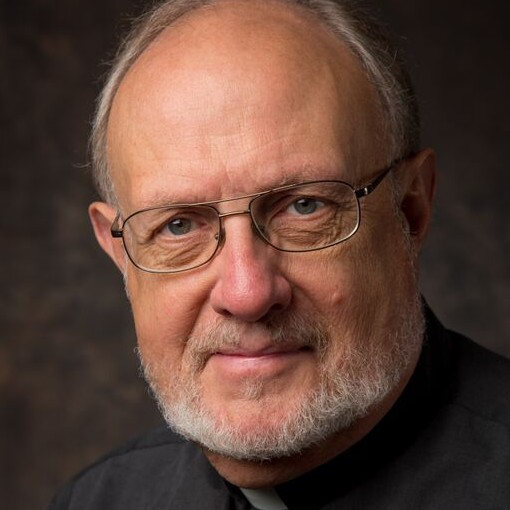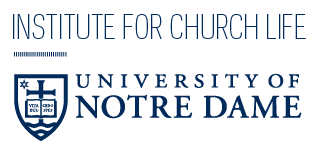The Baltimore Catechism (1891) says, “What is prayer? Prayer is the lifting up of our minds and hearts to God” (§1099). I believe that these words, taken by themselves, are the heart and soul of what prayer is, but since prayer can take many forms we might look at two of the ways that people pray.
Among the many forms of prayer are such practices as formalized prayers, for example: the Rosary, a novena, the Divine Office, or the holy Eucharist. These are all good in different circumstances and for different people. The fact is, though, that they are all predetermined in terms of the words and the sequence of ideas. Their value comes both from the fact that the one who prays is faithful to actually doing the prayer and from the formation that the repetition of these prayers works on the one who prays.
Such prayers basically praise God and tell him what we want him to do for us, while the Baltimore Catechism points more to a simple opening of our minds and hearts, ready to receive whatever our loving God has to say to us or ask of us.
I would like to speak here of a more direct and very personal form of prayer, a presence to God that is unbounded by predetermined words or ideas. This is more like spending time with your very best friend, talking heart to heart with your dearest love, or turning to your father or mother in a time of real crisis or joy in your life; it like is a child sitting on its mother’s or father’s lap, babbling about what it thinks is important. The value of this prayer comes from the same source as the formal prayers: the fact of actually doing it and the formation that the prayer works on the one who prays. This heart to heart spontaneous prayer, however, is a most personal approach that bypasses, in a first movement, the limits of words.
Both kinds of prayer are rather similar to an interaction with a dentist: we make an appointment because we know that regular dental work is important, but I doubt that many of us look forward to that visit. We appear, we follow the routine, and we spend a certain amount of time simply being there and doing nothing more than holding our mouths open while the dentist does his or her work. We might know roughly that he or she is cleaning our teeth or checking for cavities, preparing for a crown or working on a root canal, but what each little movement means is beyond us. Not only is what we achieve in the dentist’s office based almost exclusively on our mere presence and our readiness to be affected, but the interaction is also, in itself, relatively impersonal.
In the prayer which I am describing, we open ourselves to God—much as in the visit to the dentist—in total trust. We wait on what God will do within us, and realize that it is very much beyond all but our most general understanding. And because we are so small and there is so much we are not familiar with, even this intimate contact with God can feel impersonal.
Now the Baltimore Catechism develops its definition of prayer as the lifting up of our minds and hearts to God, going on to describe it as the way “to adore him, to thank him for his benefits, to ask his forgiveness, and to beg of him all the graces we need whether for soul or body.” I believe that what I am describing as personal, intimate, and spontaneous prayer is just that, but with a notable difference: the Baltimore Catechism puts all the effort and action on our side and leaves nothing to God, at least not in the definition. In contrast, we could say that this heart to heart prayer gives even more room for God to reach us as we open ourselves more.
This personal and spontaneous prayer allows us to express ourselves to God; it goes far beyond rote prayer for someone who prays regularly and seriously. It is not as “safe” or easy as a simple repetition of the memorized and prescribed prayers, but it calls us to see what is actually occurring in our hearts and to speak intimately of that to God, to face what we might not want to and take it to the One who can heal and calm, can teach and form us. Such a prayer can be a real challenge, yet this is where real growth comes from; this is prayer without the training wheels.
How can we practice this prayer? Jesus tells us to be alone with God when we pray (cf. Mt 6:5), and this is what I propose. Start with blocking out the words of other people, and in fact any sort of noise or external concern. Doing this prayer very first thing in the morning especially gives a clarity of mind, a serenity, and an ability to focus that permits this centering. Go to prayer with a cup of coffee or a glass of water, and keep a piece of paper and a pen nearby in case something surfaces that you wish to write down. Sit in darkness, in complete silence, and in a comfortable position that will help you forget the needs and complaints of your body (but not one that might lead you to sleep). Avoid or ignore any feeling of pressure to finish and move on. Set aside a certain amount of time for your prayer, and then spend every minute of that time—or even a few minutes more—in prayer. Do this with patience and generous trust, and God will make sure that it does not cause you any real problems. This is all part of quieting ourselves, readying ourselves to listen and to speak from our hearts.
As you enter this prayer, greet God warmly and embrace the Father, Son, and Spirit just as you would your parents or spouse, then quietly pay attention to what comes to you. At first this will ordinarily be the people and things you most care about, and you can let your emotional attachments to certain people or problems identify what you most need to focus your prayer on. These deserve attention and perhaps even an actual physical gesture of holding them up to God and then releasing them. Remember that God knows exactly what we need, better than we do and beyond any necessity for us to explain our concerns to him, so at this point you do not even need to use words to express what you are feeling but can simply pray in an imaginative and non-verbal way to open your heart to God.
As those immediate intentions pass from your attention, you might look at six areas of feeling flagged by the words sad, glad, mad, fear, guilt, and shame. Hold each word briefly in your mind and sense whether your feelings resonate with it in any way. If you can look at the emotions that this exercise can rouse you can often discover why you feel that particular way and can move towards dealing with the situation. This process of getting in touch with your emotions can be a door to a deeper level of prayer, one where you will deal with what is not conscious and obvious, with what is even difficult to name completely and precisely once you face it.
You might, for example, sense an anger towards someone or about a situation, and as a “good Christian” you might deny or refuse that anger because you believe it to be sinful. On the contrary, just as our senses put us in touch with the parameters of the physical world and where we are in it, our emotions can put us in touch with where we are in our relations with ourselves and with others, including God. If you feel a sense of bodily pain it is not necessarily a bad thing; pain, both physical and spiritual, is a way to alert you to a critical situation, something you need to deal with, and prayer is the most natural place to come to grips with either physical or spiritual pain.
As for the anger, sometimes just the very awareness of it and of its object can free us from its control. Too often we deny such feelings and bury them, which allows them to influence us without our being aware of it and thus gives them greater power. We can often feel resentment as a result of such suppressed anger, and if we are not aware of it we can even feel an enervating depression. On the other hand, if we know why we are angry we can move towards deciding what to do about it, such as forgiving the individual concerned or seeking a reconciliation. We might even decide that while we have a right to be angry we will forgive and forget, or we might decide to address the person concerned and discover that it was all a mistake. In each case, we are casting light into an area of darkness and allowing God to help us deal with the situation.
It should be clear that such a process of dealing with our emotions is of some spiritual value: first the awareness, then the conversation with God about what we feel (with a great deal of patient listening!), and then a resolution which might not even be overt action. This is truly a prayer in and to the Holy Spirit, seeking to see where the Spirit is calling us and using our emotions as a basic divining rod to that end.
We can then generalize this whole practice by being aware of who we are and what state we are in as we present ourselves to God. By trying to clear up our relations with others (and even with ourselves) in this way, we metaphorically “leave our gifts before the altar” to go and reconcile ourselves with others or even to express gratitude to them (Mt 5:23–24).
In a third moment, after dealing with your most obvious concerns and what your deeper emotions elicit, will come the “distractions.” These can be similar to what attracts your attention at the beginning of your prayer in that they call for your attention, but here you need to listen much more than speak.
Listening to and seeing what is happening in your soul as these distractions appear is absolutely critical, since you can be very close to the Spirit here: as you deal with these seemingly unprayerful thoughts or images you should pay attention to what the Spirit is leading you to in presenting such things or in letting you experience them. What should you learn about yourself as you see yourself dealing with these seemingly secular and sometimes even sinful things?
Praying in this mode can be fruitful in the extreme, but often the fruits are at a very deep level and not immediately obvious; sometimes the result is only a very gentle but radical reorientation of our whole lives. We come to prayer not as simple children but as filled with experience, thoughts, choices, values, habits, and other elements of our personhood, and we need to remember that one does not change such a complexity overnight. This is an extremely personal prayer, a prayer that leaves us open to God in a most trusting and fundamental way, and it can call into question our values, our practices, the form of our faith, the discrepancies between what we claim to believe and what we practice. This is where we will grow the most and in the most important ways.
The ending to this prayer will come naturally, with thanks or a yearning, praise or regret, and without much effort you will find the words to speak as you feel to your Father, Brother, and Spirit; these will be the words that are most appropriate for this particular day’s prayer experience. At this point you might even find that the words seem to appear by themselves, almost as if the Spirit were giving them to you.
One or two more general reflections. Children are very centered on themselves (as they should be), and they love repetition, and both of these help them to build an identity—a security and certainty as to who they are. However, by the time they are three or four years old, we expect them to become more other-centered (“Share your toys,” “Be nice”) and ready to move on to a more responsible and loving way of being and acting. Extending that thrust away from self and towards/for others, by the end of our lives we should hope to be absolutely other-centered and forgetful of our selves. We should wish to be intimate with God in our prayer and to realize, in a most concrete manner, how firmly dependent we are on the Lord’s love and care for us; we should seek, in response, to act in a mature manner that flows purely from the law of God’s generous love in our hearts (Ez 36:26).
And as for the repetition, if we have a moment of prayer which was particularly fruitful, we will change because of it. Not only can we return to such a moment, we really should do so since the Lord might wish to remind us of what we learned or might wish to deepen the experience or take us in a slightly different direction, building on that first moment.
This prayer that I am describing moves in this direction, away from the safe and familiar and into a living and intimate conversation with God in the Persons of the Spirit, the Son, and the Father, our relation to each of them different, warm, trusting, and familiar in a new way.
If the moments that I describe for this prayer seem rather too clear and almost artificial, it is only that they are only for the purpose of analysis and presentation: on any given day we will find ourselves called to very different conversations with God and in various forms, and we will of course respond personally and in different ways. What is important is that we pray—pray in every circumstance—and let God himself teach us in our prayer how to grow in prayer, in trust, and in love.
![]()
Featured Photo: Leia Barker; CC-BY-NC-2.0.



